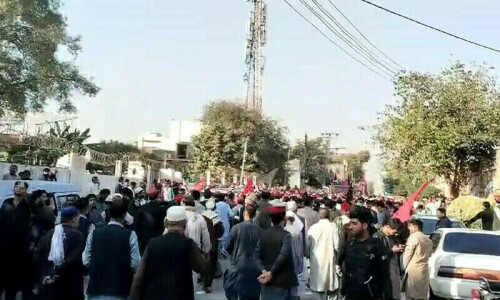Last Sunday a friend invited me to go and see some of the rehabilitation work going on in the flood ravaged areas of Sindh. The work is being carried out by Karachi Relief Trust, a disaster management voluntary organisation, that has morphed into providing longer term solutions like re-building homes destroyed by the floods.
Armed with my camera and an extra battery I hopped into his car and we headed out towards Korangi then took the National Highway to Thatta district. Yes, I did need the extra battery; there was a lot to photograph!
Driving through fields of sugarcane and sunflowers, with a touch of serene blue provided by the shimmering fish ponds, it was difficult to imagine that last year the same area was submerged in flood water. Out of 1.7 million people in Thatta district, over 800,000 were directly affected and displaced by the floods. On the way we saw relief work being done by foreign and local organisations.

We visited the villages of Suleiman Kehrai, Nodo-Baran and Jati-Angario. What was immediately obvious was the alternate forms of construction. The new stone houses consisted of two bedrooms, a kitchen and a bath whereas previously, the villagers were living in homes that were made of straw, bamboo and mud. These were vulnerable in the floods whereas, the new houses have a life expectancy of at least 75-100 years. In the event of future flooding, the occupants could flee but would have somewhere to return to after conditions improved instead of being displaced and forsaken by the state.

The next village, Nodo-Baran, provided an example of the use of solar power. Eight solar panels mounted on a roof provided enough power to drive a motor. The motor in turn was hooked up to a pump that was pulling the water out of a borehole. The water was stored in an overhead tank. A piping network distributed water to the houses.
For lighting, each house was provided with two energy efficient bulbs that were powered by individual (thus very small) solar panels.










Instead of using primitive stoves that do not have a chimney to direct the smoke, KRT is currently designing a stove that would be heat efficient and will have a chimney. The design will be simple so that the villagers can manufacture it themselves.

On the whole the atmosphere of the villages was quite inviting. The residents greeted us with warmth and mutual respect. There was in them a tangible, saturated sense of gratitude towards the relief workers.
The children appeared healthy and well fed. I chatted with the children but my lack of Sindhi was a handicap. When I said hello to the boy in the picture above, he just smiled and remained silent. I was later told he was born dumb. While distressed by this information, I was heartened to hear one of the senior KRT person instruct the local project manager to organise a medical check up of all the children in the village next week. He felt that if there is early detection of a problem, it could be mitigated.
While the villagers seemed healthy, their use of gutka (an addictive and carcinogenic form of tobacco) is a serious threat. Every man, woman and child is consuming this poison. As a shopkeeper in the nearby town put it, “In other places a newborn is given milk, here they give him gutka”.

An interesting idea explored during the trip was fish farming. Quick economic calculations indicated that it could be an excellent source of income for the villagers.

This trip was a big dose of optimism for me. With the thick clouds of despair so ubiquitous in Pakistan, the tenacity of the flood victims, the generosity of the donors and the dedication, planning, discipline and compassion of the doers will keep my spirits up and the hope for the future of Pakistan alive.
Photograpghs by Vaqar Ahmed.

The views expressed by this blogger and in the following reader comments do not necessarily reflect the views and policies of the Dawn Media Group.












































